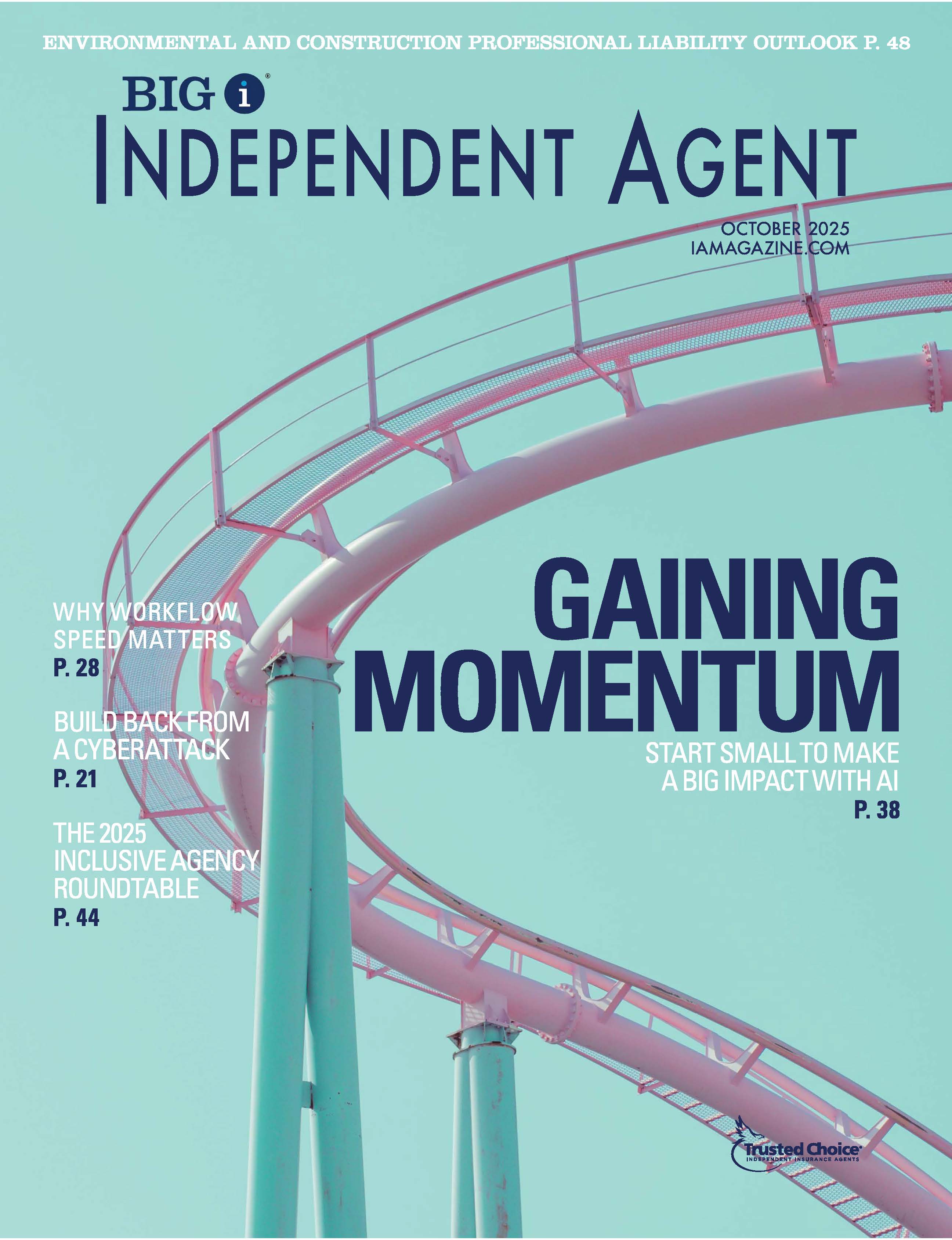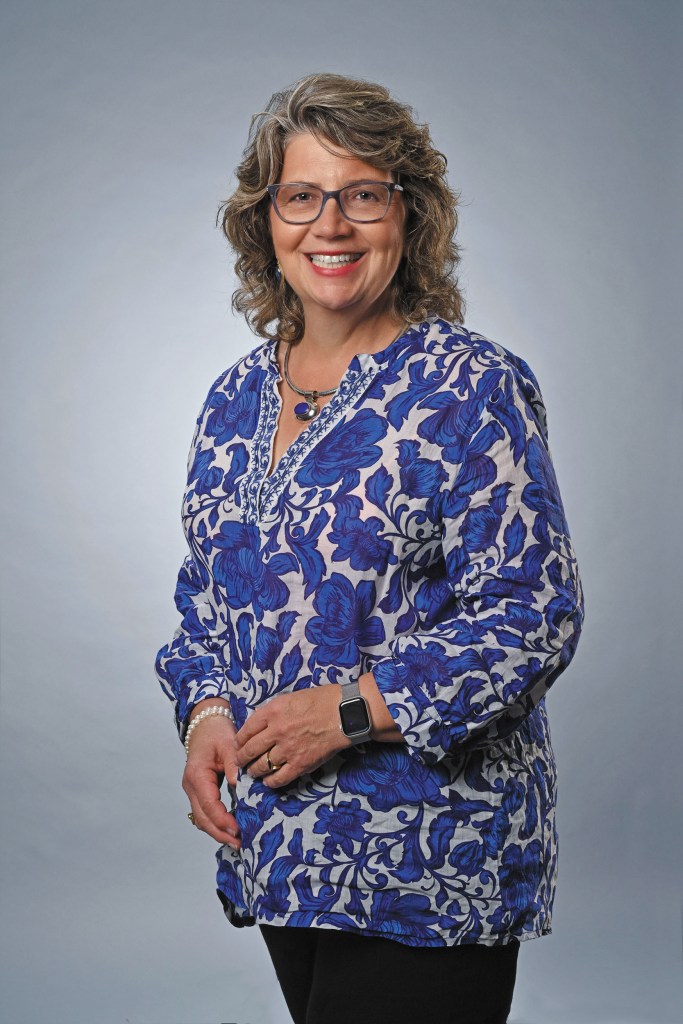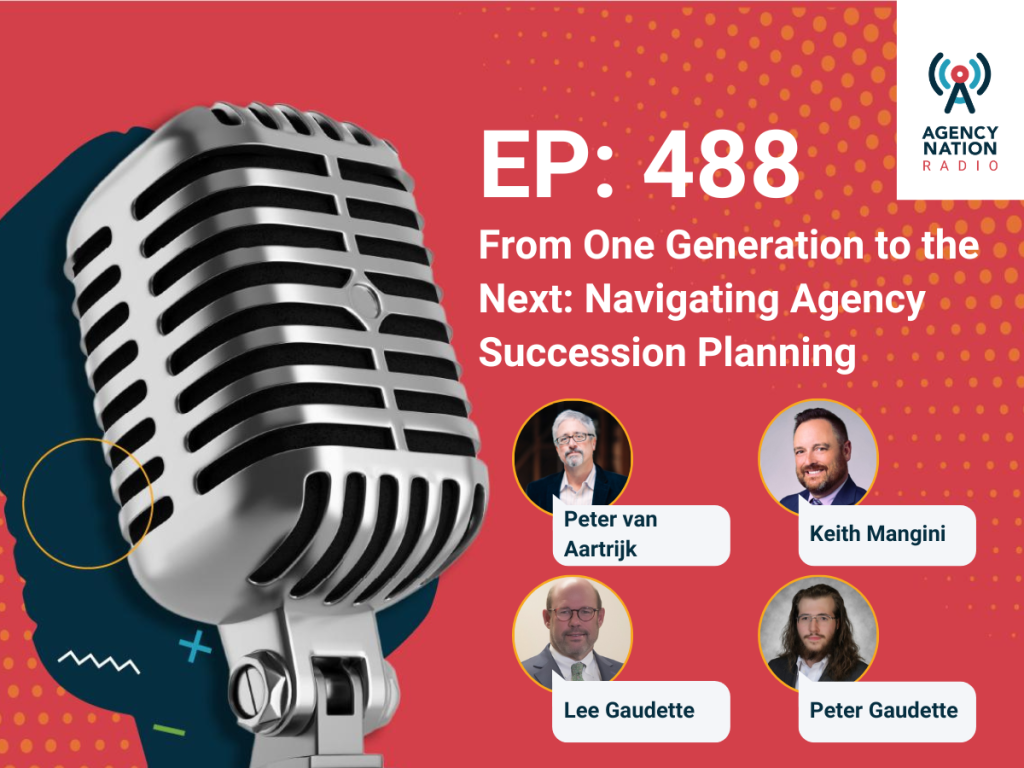Hiring: Overcoming the No. 1 Issue Facing Independent Agencies

By: AnneMarie McPherson Spears
Has your agency struggled to make a hire? If so, you’re in good company. Finding and screening job candidates was the No. 1 issue facing independent agencies in 2022, according to the 2022 Agency Universe Study—retaining its position as the top challenge from 2020.
It may be tempting to blame the Great Resignation and put hiring goals on hold until a recession increases unemployment and a rush of qualified candidates swamp your job posting like rabid fans at a red-carpet premiere. But those days may be gone for good.
“I’ve had a lot of conversations with agency owners, and they asked me, ‘When are the jobseekers going to come back?'” says Claudia St. John, president of Affinity HR Group, a Big “I” Hires partner. “Folks are waiting for the labor market to soften, but all indicators show that this market is going to continue to be tight—and tighten more—for the next 10 years.”
There simply aren’t enough workers in the pipeline to keep abundant talent flowing. “We lost a lot of people out of the labor market, either because of COVID-19 illness or death and also mothers who have decided it’s not worth it and their priorities are elsewhere,” St. John explains. “The baby boomer generation is huge and they’re retiring, and we don’t have the birth rate behind them. Gen Z is just not large enough to replace the departing boomers and is looking for a different employment relationship than prior generations. We’ve got what we got.”
And if it’s tight for the U.S. workforce at large, hiring in the insurance industry is even harder. Unemployment in the insurance industry has historically been lower than the national average, according to Jacobson and Aon Ward’s “Q3 2022 U.S. Insurance Labor Market Study.” In November 2022, the national unemployment rate was 3.7% but the unemployment rate in the insurance industry was 1.5%.
To attract talent, agencies need to adapt, not wait. Luckily, the labor market’s challenges present some surprising opportunities for the independent agency channel.
“In times like these, smaller organizations, like many independent agencies, actually have some levers that they can pull to outcompete higher-volume recruiters for the best talent available in the labor market,” says Ted Kinney, vice president of research and development at Talogy, a Big “I” Hires partner. “It’s a candidate’s market. And if you’re a high-volume recruiter, you can’t give candidates white glove service.”
“There are some things that I really like about this labor market,” Kinney continues. “One of the things that I stress all the time in labor market conditions like this is that you have to think about your selection process as a bidirectional decision-making process, where it’s not just about you making decisions about candidates, but candidates making decisions about whether or not they want to join your organization as well. Agencies have a particular advantage in that they can build a closer relationship with that candidate pool and give richer and more complete data to the candidate about what they’re going to be getting into.”
Acknowledging this element of the hiring process is a key part of the hiring success of Powers Insurance & Risk Management in St. Louis. Timothy Davis, chief operating officer of Powers, a family-owned agency, points out that many family-owned agencies have the attributes that job seekers are looking for in today’s environment—and should be shouting those perks into a megaphone.
“There’s a lot that all of us family-owned agencies can offer right now,” Davis says. “It’s that anti-corporate atmosphere that we’re seeing across the culture. There are a lot of people who don’t want to deal with red tape—and that atmosphere can be avoided in the family-owned agency. It’s something that a lot of agencies should make a big deal about; family-owned agencies understand what it’s like to have a family and balance the workload.”
Setting the Scene: Job Search Parameters
Your agency is growing, a top producer moves on or an employee retires, and you’re looking for your next employee. The quest begins by determining exactly who you’re looking for—and what you need to do to attract them.
“If you were to draw a compass around your office, does the talent that you’re looking for exist within a 10-, 15- or 20-mile radius? If not, then you need to do something different,” St. John says.
Unless your agency is a blockbuster production, you shouldn’t be looking for the Brad Pitt of insurance. However, it may not be in your best interest to hire the new kid on the block either. “There’s a bell curve, and most likely your business is going to be in that middle section,” says Suzanne Lucas, founder and owner of the Evil HR Lady. “You’ve got to look for the people who are there, too; otherwise, they won’t be happy with you.”
When it comes to adjusting your parameters to find the appropriate talent, there are three variables that an agency has to work with, according to St. John: “geography, pay and experience.”
1) Geography. “There are lots of great candidates out there that may not be in your geographic area,” St. John says. “You may find somebody who’s amazing three time zones away, but a lot of agency owners are reluctant to do it because it’s their personal preference to have folks in the office. Well, if you can’t find somebody locally to satisfy that, then consider changing your geographic requirements.”
Specialty Risk Insurance in Carthage, Missouri, has been rapidly expanding its team since the start of the coronavirus pandemic. With a book of business primarily focused on agriculture, the agency is seeking a full-time marketer.
Willingness to go remote has “helped us get new people,” says Chance Morgan, head of sales and product development at Specialty Risk Insurance. “One of the key things we’re interested in is someone who is skilled at marketing but also has a large, consistent background in agriculture. Someone like that isn’t sitting here in Carthage going, ‘Man, I wish I could get a job.’ They’re in Oklahoma City or Austin.”
2) Pay. “If you’re having a hard time finding top talent, are you paying enough?” St. John asks. “Agencies should be looking at their job pricing from the perspective of the ideal candidate that they want to hire.”
“You don’t need to be paying top dollar, but you do need to at least pay an appropriate amount and supplement that with things that we know employees want,” she adds. “They want flexibility. They want to know that their employer cares about them. They want to know that their work is meaningful.”
3) Experience. What if you can’t pay for that fully licensed producer with a decade of on-the-job experience? “If you can’t raise your compensation, you’ve got to lower the job,” Lucas says. “There are a lot of people that would love to get on-the-job training.”
“The biggest challenge is finding capable talent in our industry right now,” Davis says. “We do pull from within the industry, but we’re also willing to hire and train employees when it makes sense. I found that we can hire some really talented individuals that are a couple of years out of college and just haven’t found that right career path.”
Agencies may be fixated on the level of experience or certifications they think they need, and therefore costing themselves resources by looking for a unicorn. “We’ve had agency owners that have wanted experienced customer service reps that are licensed, and they took so long to find that they could have hired somebody without the licensing and gotten them licensed within the amount of time it took for them to finally find talent,” St. John says.
Red Carpet Premiere: Job Postings
After determining the criteria to attract the talent you need, the next step is posting the casting call. The key to crafting a stellar job advertisement? Above all, be transparent.
“What it really comes down to is strongly advertising the things that make you a competitive employer for that type of candidate,” says Eric Waldowski, client success manager at IdealTraits Inc., a Big “I” Hires partner. “You’re not going to get a candidate to engage with you if you don’t have an attractive, transparent job opportunity for them. Candidates should have zero questions about where they will work, when they will work and what they’ll be doing at work.”
Pay should also be clearly outlined in the job posting. “Candidates are going to be more likely to apply for a role that clearly states how much and how often they’re going to be paid,” Waldowski says. “Here’s an example of what that sounds like: ‘Base pay of $2,000 to $3,000 per month, dependent upon experience. Top earners in our agency earn over $2,500 a month in commissions and bonuses beyond their base.'”
Not only should the job posting include compensation structure details and work arrangements, additional benefits that help your agency stand out should be listed as well. “List as many benefits as you can, including non-conventional ones,” Waldowski says. “Do you have an office dog? Is there a monthly pizza party? These help your agency stand out.”
As far as publicizing the job openings, Davis uses “every resource I can think of,” he says. “I post it on our website, we put it on social media, we post on Indeed and we engage with recruiters.”
However, Powers’ secret for attracting talent comes from an unlikely source. “I think Google reviews have helped a ton,” Davis says. “It’s incredibly rare I interview someone who hasn’t been on our website and seen our reviews. I think our Google reviews help explain our company culture just as well as anything I could say.”
A positive online presence helps prove to job candidates that agencies can walk the talk, especially given that the first action a potential applicant will often take is looking at a company’s online presence, points out Blake Cavignac, growth advisor at Cavignac, based in San Diego. “You can sell people on joining you, but when they do join and the culture isn’t what you said it was, they’re going to think they were misled. We have a great culture, but if we aren’t able to translate that into our website, our Glassdoor page and our LinkedIn page, then I don’t think we’d have as much success.”
To fulfill the agency’s talent needs, Cavignac takes a proactive hiring approach using LinkedIn Recruiter, a paid service with multiple tiers. “We’ll put in the geographic area we’re looking in, identify candidate job titles, and LinkedIn will come back with candidates,” he says. “I’ll then briefly review the profiles to see if they’re a fit, and if they are, I’ll reach out via a customized email or InMail on LinkedIn.”
Current employees also offer some of the best marketing for job openings. “Good people know good people, and we have a ton of really good people here within our organization,” says Gage McKinnis, operations lead at Specialty Risk Insurance. “When you have a need, it’s a lot easier when you say, ‘Hey, we need a couple of people to join the team,’ and before long you have a list of candidates that our people know and feel confident they’d be good assets to the organization.”
Specialty Risk Insurance has also “started a very aggressive internship campaign,” Morgan adds. “In the summers, we provide a paid internship with living expenses. We’ve had four or five young people that all started as interns and then worked part-time remotely during college who, when they graduated, just naturally wanted to continue their career here.”
What if, even after you’ve drafted a clear job advertisement and publicized it through both recruiting sites and word of mouth, you’re still struggling to attract quality candidates?
First, go back to the geography, pay and experience variables, and don’t be afraid to test for different factors, Waldowski says. “Let’s say you post an ad for an in-office insurance sales rep, but you’ve been struggling to find candidates,” he says. “You could post a remote opportunity for that individual job, or you could also run one with different experience or licensing criteria.”
But here’s another question: Is it too difficult for candidates to apply for your job? If the process to apply is too lengthy or complicated, you may be losing out on qualified applicants. The length of an initial application is a factor for 66% of job candidates in determining whether they’ll complete and submit it, and more than 70% of job seekers said they will not submit a job application if it takes more than 15 minutes to complete, according to Greenhouse’s “2022 Candidate Experience Report.”
“I keep an eye on this by regularly applying for jobs to see trends in companies’ processes,” Lucas says. “One that I filled out a few weeks ago asked me to upload all these documents, and then when I got to the next screen, it prompted more supporting documents, saying I could upload up to 25! What would these 25 documents possibly be when you’ve got your resume and your cover letter? And what recruiter is going to look through 25 documents? Make your process streamlined and easy to apply to.”
Silver Screening: Interview Process and Selection
Once a pool of applicants is available, the difficult job of choosing one begins. And it’s a decision that’s important to get right. While the average cost per hire is nearly $4,700, according to new benchmarking data from the Society for Human Resource Management (SHRM), Edie Goldberg, founder of E.L. Goldberg & Associates and chair-elect of the SHRM Foundation, says that factoring in “soft costs” like time invested by leadership throughout the hiring process pushes the real price up to three to four times the position’s salary.
“Of those costs, I would say 30%-40% are hard costs, and the other 60% are soft costs,” Goldberg said.
“Think about the consequences of a wrong decision,” Kinney says. “You have a candidate that’s not a good job fit who stays through the process and potentially gets a job. Then you have someone who’s either going to be a low performer or a bad fit within the culture, and then you’ve got turnover and replacement costs. You end up paying the price.”
For smaller agencies, the stakes are that much higher. “The criticality of that employment decision is higher, with an individual’s impact being much more salient in a smaller organization,” Kinney says. “But luckily, smaller agencies can also take advantage of the smaller candidate pool by putting the smaller group of candidates through a more rigorous selection process.”
Hiring becomes a balancing act between being thorough to ensure the agency and the job seeker have the information to make the bidirectional employment decision—and making the process so lengthy that the candidate disengages.
“You can only keep engagement for so long, and companies are slowly learning that six rounds of interviews aren’t cutting it anymore,” Lucas says. “Your competitors are hiring after one or two and your candidates aren’t going to put up with a long process anymore.”
The most important action an agency can take during the hiring and screening process is “keeping applicants up to date,” Lucas adds. “I’ve had recruiters say, ‘But there aren’t any updates, so I don’t tell them anything because there’s nothing to say.’ Telling a candidate there’s nothing to tell them is an update so they don’t feel like they’re being ghosted.”
Almost 58% of candidates expect to hear back from companies in one week or less regarding their initial application, according to Greenhouse’s candidate experience report, but many companies are failing to keep up with these expectations with more than 75% of job seekers reporting that they have been ghosted after an interview.
“Most people have a job right now,” St. John points out. “You should reach out to an applicant no more than 24 hours after somebody applies. Absolutely use a text message. Have someone high up in the organization drop them an email as well. You are competing against everybody in your community, as well as people across the country, so be creative and intentional about keeping people engaged.”
Once Powers receives an application, “the first step in my screening process is a quick, five-minute phone call,” Davis says. “I ask two or three questions—really it’s identifying if this person has a pulse and they’re really interested in interviewing. In this step, I’m just trying to figure out if I want to work with this person based on their handful of responses.”
At Specialty Risk Insurance, staff are often on the road visiting their agricultural clients, so their philosophy is: “If we wouldn’t mind having them in the truck with us the whole day, then they’ve passed hurdle No. 1,” Morgan says.
“If that initial call goes well, then I offer them an interview,” Davis says. “Our first interview is always via Zoom at this point; we’ve found that’s more efficient.”
If the applicant pool is on the small side, Kinney recommends holding off on any screening assessments until after the first interview at least. “If you have an application that someone spends 25 minutes filling out and then they realize they have to sit there for another 45 minutes taking an assessment, that’s where we see candidates disengage and drop out of the process,” he says. “If you’re able to put an interview ahead of the assessment, you can set the expectations.”
Powers, Specialty Risk Insurance and Cavignac each start the assessment portion of their screening process with an emphasis on figuring out what makes the candidate tick—from a behavioral test in Powers’ case or a cognitive test at Specialty Risk to a professional development system that Cavignac developed for use at the agency—before focusing on technical skills or knowledge further down the hiring funnel.
In today’s tough hiring market where more agencies are considering hires from outside the industry, that emphasis on a candidate’s soft skills is more important than ever. “Maybe now is the time to recruit a broader applicant pool and give some people a chance that have shown potential,” Kinney says. “If I’m going to take a chance on a candidate, I’m going to take the chance based on conscientiousness, attention to detail, work ethic, intellectual curiosity, because those things explain much more about how people perform on jobs over time.”
“Where someone worked last or what education they have doesn’t tend to predict what a person is likely to do on the job,” he adds. “If you cut candidates based on knowledge and experience, you end up getting candidates that are just like other people in the industry, and there aren’t that many of those people out there in the labor market.”
“Maybe a Starbucks shift manager has applied for one of your roles with no insurance experience at all but a proven track record in a customer-facing role,” Waldowski says. “If you’ve got an assessment outcome that shows the candidate’s going to thrive in a service or a sales position, you should consider them. It’s about looking at the individual instead of saying, ‘Oh, a person that came from this background probably can’t do this.'”
“A lot of what folks are doing can be taught, but it’s good soft skills that are hard to come by,” St. John agrees. “If you’re hiring a college student, or that amazing server at a restaurant who has just the right disposition, the only thing you have to go on is their behavioral characteristics.”
Big “I” Hires has several tools for screening both behavioral and knowledge tendencies: IdealTraits and Caliper both offer behavioral assessments, Big “I” Hires DIY Hiring Toolkits includes an ideal candidate profile for multiple agency roles, and VMB’s hiring in insurance testing services (HITS) offers knowledge tests.
While behavioral testing is the name of the game today, resume gaps are out of vogue. “A lot of employers historically view gaps in employment as a huge red flag, but I think they should look differently at that,” St. John says. “If nothing else, the times have shown us that balancing family and life can be challenging. Gaps in employment, particularly for mothers, have disadvantaged them in the recruiting process.”
“If I receive an application with a nine-month resume gap, I’m more concerned with how responsive, communicative and professional they are during my screening process than I am about that history gap,” Waldowski says. “Talk to them first before passing on them because of that.”
Ultimately, whether a recession raises unemployment rates or the job market remains squeezed, “these practices should be used in every market condition—because it’s not just about hiring a person, it’s about hiring the right person,” Waldowski says. “If you’re advertising accurate ads, engaging with your candidates and offering opportunities to folks that have the skills and are a good fit, that’s going to be your recipe for success.”
AnneMarie McPherson Spears is IA news editor.










